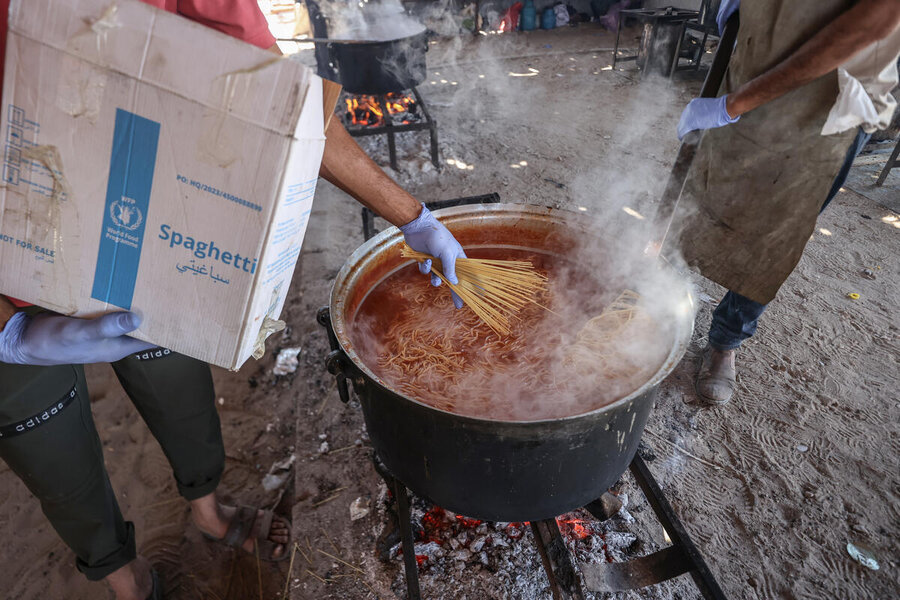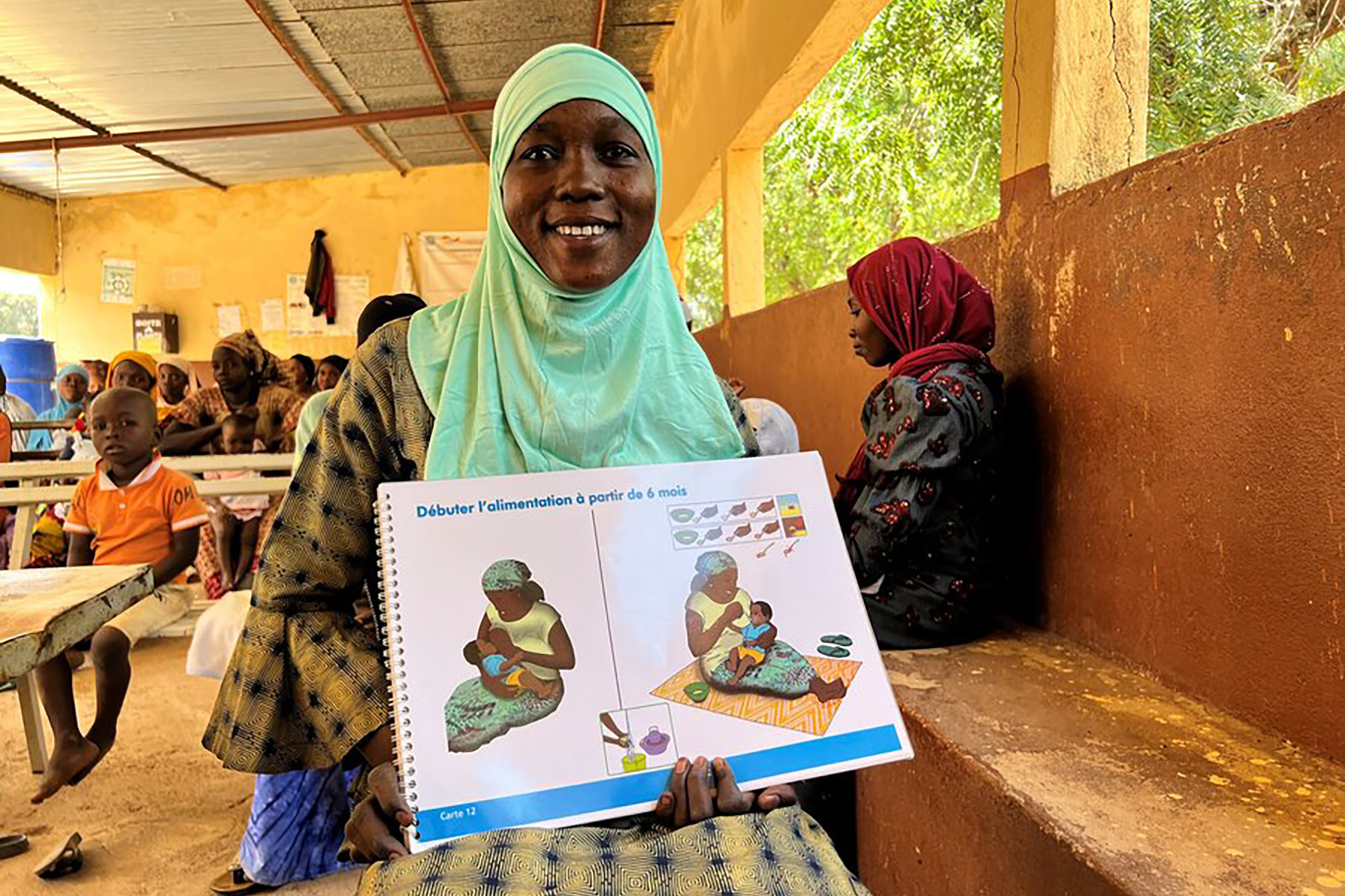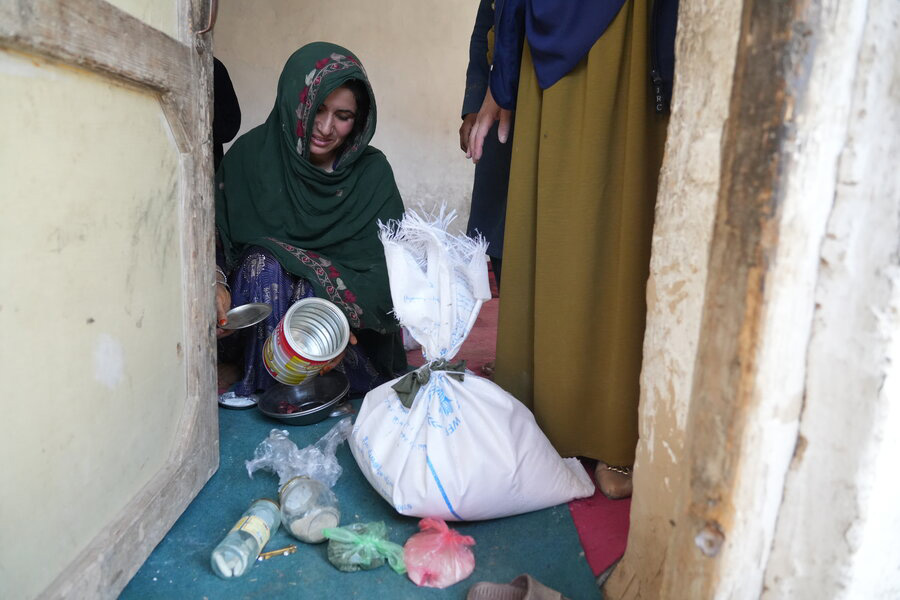Learn more about this rare and deadliest form of hunger, which is spreading in Sudan and threatens Gaza and elsewhere – and how WFP is fighting it.
Food Aid
Since the Syrian conflict began in 2011, over 75% of the country's 10.5 million children have been born into a war-torn environment. Many now face severe consequences, including rising malnutrition rates and inadequate access to essential nutrients. Historically, Syria had no significant child malnutrition issues, but prolonged conflict, economic collapse, and recent crises have drastically changed this. Currently, 9.1 million people are food insecure, and the World Food Programme has significantly reduced assistance due to funding shortages. Child malnutrition rates have nearly tripled from 1.7% in 2019 to 4.8% today, with some coastal areas experiencing rates as high as 14%. Additionally, malnutrition among pregnant and breastfeeding women has surged, posing serious health risks for both mothers and their children.
The World Food Programme urges the international community to increase funding and support a full-scale humanitarian response to address the urgent food security needs of over 2 million people in Gaza.
The term "food basket" is often used to describe a form of assistance the World Food Programme provides to people caught up in crisis. Here's what it means
Despite restrictions on women in Afghanistan, the Sharifa sisters have built a thriving business with WFP's support. In other countries, farmers tackle the climate crisis, women create savings groups, communities reduce food waste, and support nutrition through traditional crops. In looking back at a year in which the World Food Programme has been responding to major crises - including Gaza, Sudan and Haiti - it's time to shine a light on other equally important aspects of WFP's work. Alongside its work in emergencies, its resilience-building activities empower people to create food security over the long term; saving lives and changing lives. Here are a few stories you may have missed.
The latest FAO-WFP Hunger Hotspots report is clear: Catastrophic levels of acute food insecurity persist. In 5 countries - Palestine, Sudan, South Sudan, Haiti, and Mali - people are or may soon face catastrophic food insecurity mainly due to conflict. These high-risk areas demand urgent action. Also, over 15 countries face varying levels of acute food insecurity, with 4 new hotspot nations added to the list. The report also warns of an impending La Niña event, which threatens to bring extreme climate conditions that could further disrupt lives and livelihoods across numerous hunger hotspots.
WFP leaders in the Democratic Republic of the Congo, Palestine and Sudan – three of our biggest emergencies – call for the guns to fall silent.
Across the globe, the way Indigenous Peoples produce, transform and consume food is based on a deep knowledge of the local ecosystems. WFP is tapping into this knowledge to fight hunger.
“Prior to this war [in Gaza], people had dreams. Today people's dreams are about survival.”
Matthew Hollingworth has worked in conflict zones around the world, from Ukraine to South Sudan and Syria. Previously in charge of the World Food Programme’s (WFP) emergency operations in the West Bank and Gaza, Matthew was responsible for delivering life-saving aid to desperate people.
“People ask me every single day when I'm in Gaza: “When will the bombs stop? When will the fighting stop? When will they stop blowing things up? When can I go home?” We don't have the answers. But we do know that that is what's needed.”
WFP delivers food relief to more than 120 countries across the world suffering the impacts of conflicts, disasters and climate change. In this episode of Awake at Night (recorded on 21 June 2024), Matthew Hollingworth reflects on his daily struggle to prevent famine in Gaza, on the apocalyptic scale of the destruction there, and on the morale boost he gets from working with extraordinary colleagues on the ground.
Amid access restrictions and closing of bakeries in Rafah, the World Food Programme is working to serve remaining supplies to as many people as possible.
The escalating military activity in Rafah, southern Gaza, has triggered mass displacement and threatens a humanitarian catastrophe, with the World Food Programme urgently needing access and supplies to rebuild aid distribution systems.
Facing mounting challenges from COVID-19, climate change, and global conflicts, farmers are crucial to food security, and organizations like Food and Agriculture Organization are pivotal in supporting their resilience amid crises.

WFP: Food distribution paused in Gaza
Food distribution has been halted in the North of Gaza due to heightened safety and security risks to both the delivery personnel and recipients.
In the village of Dotembougou in central Mali, Atoumata Nimaga, a mother of three, is now a local volunteer leader who teaches other village women about healthy eating. Not so long ago, Atoumata faced hunger so severe that it threatened her unborn child. With the help of the World Food Programme, she was able to receive nutritious rations during her pregnancy. She is now part of a joint programme that helps families offset the negative effects of climate shocks and humanitarian disasters. The programme aims to put more than 38,000 women at the center of the development process, giving them the knowledge and tools to address the challenges many face.
The Afghan community is being pushed to the brink as the World Food Programme is forced to cut food assistance driving people into a freefall where they do not know where their next meal is coming from. Children are earning 50 Afghan Afghanis (US$0.60) a day from garbage and plastic collection. In a country reeling from protracted conflict, a decimated economy, and a climate crisis that is worsening by the day, 15 million people are going to bed hungry every night. WFP urgently needs US$1 billion to pull Afghans back from the brink.














